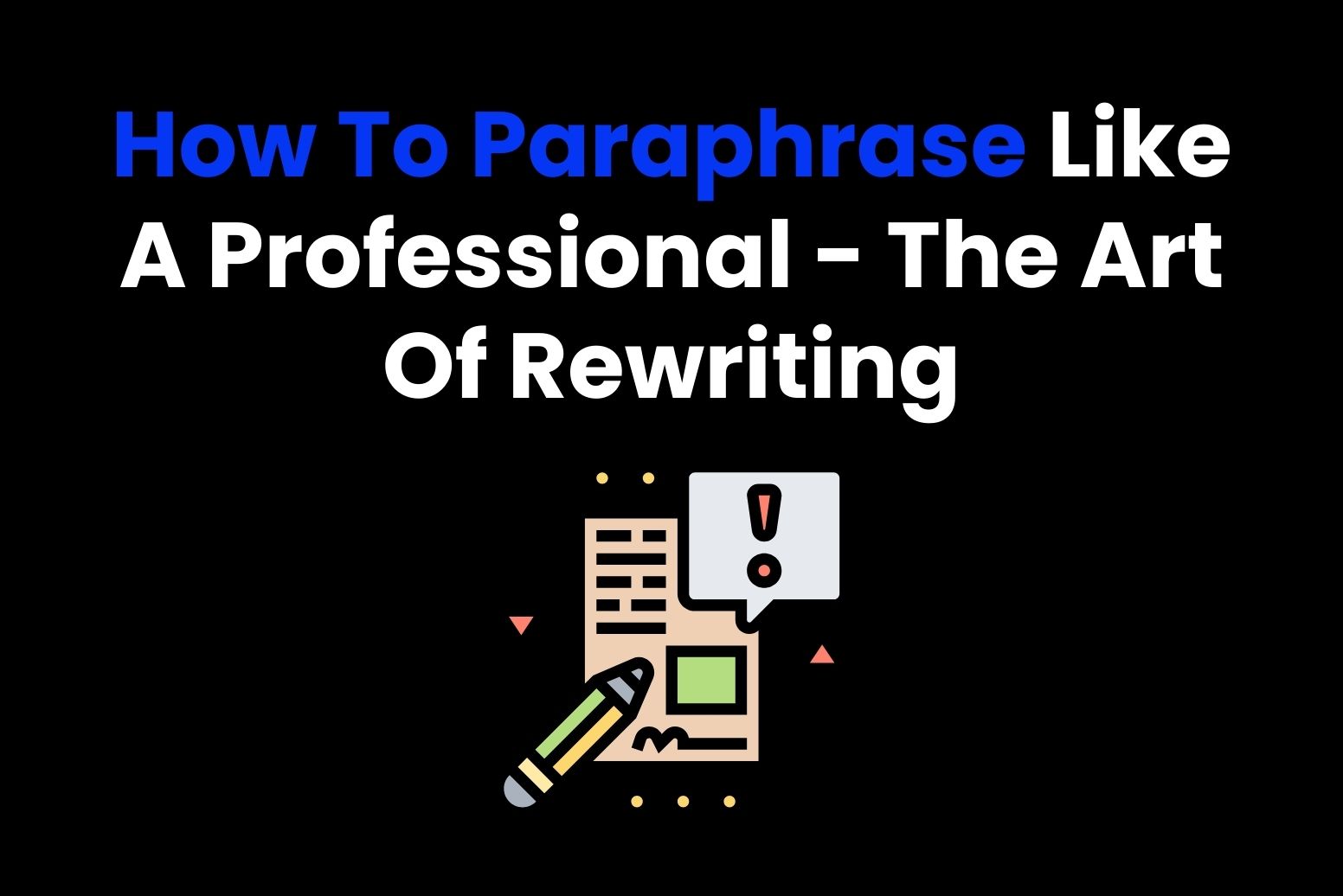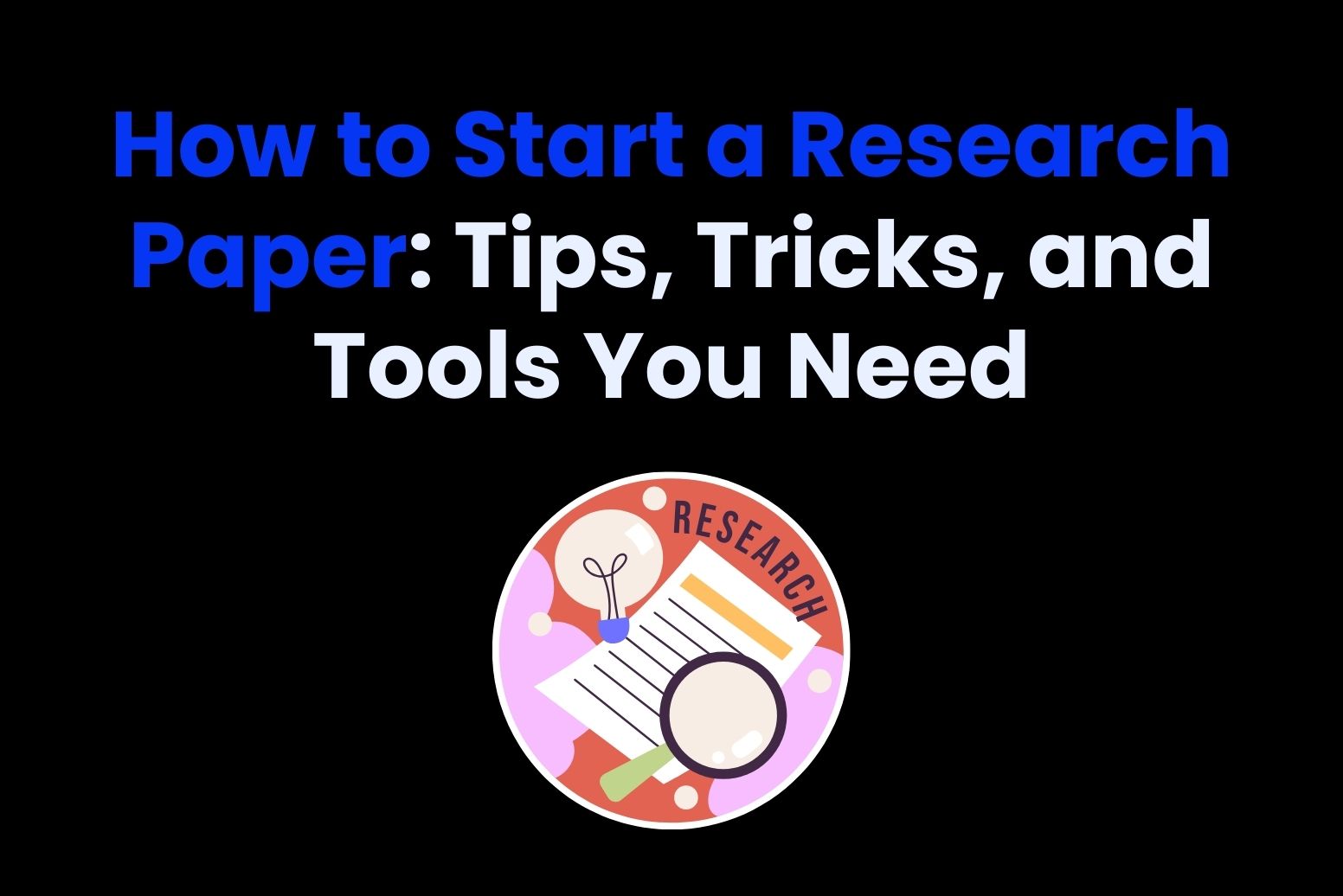Have you ever been stuck thinking about how to rewrite something in a better way, especially when it is already very well-written? You don’t want to sound like a copycat, right? If you know how to paraphrase content, you’ll be able to walk out of such situations unharmed.
Paraphrasing is more than just switching words around; it’s about putting your personal touch on things while keeping the original idea intact. In this guide, we’ll break down how to paraphrase so you can do it confidently, whether you’re tackling school assignments, work projects, or just trying to sound clever in a text message. Let’s write in your way!
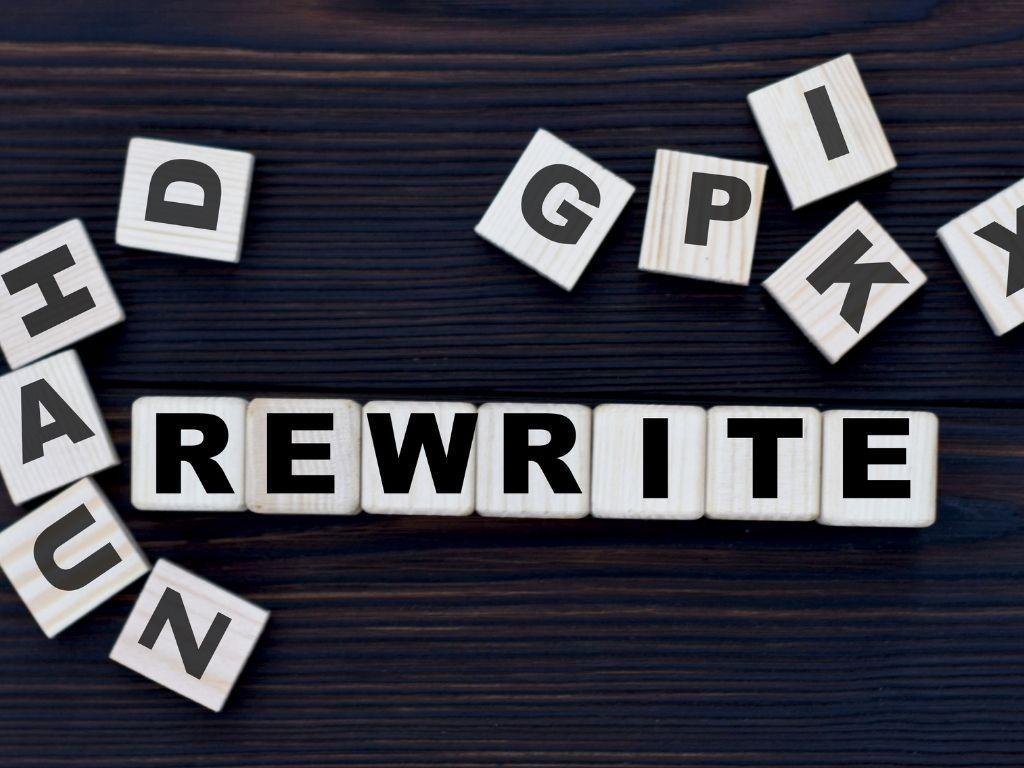
What Even Is Paraphrasing?
Okay, let’s keep this simple. Paraphrasing is when you take someone else’s words and rewrite them in your own style. When you paraphrase, you’re not just reordering words or tweaking them. You’re giving the idea a complete makeover while keeping its heart intact. Paraphrasing gives you the chance to sound like you. It’s not about mimicking someone else’s tone; it’s about putting your personal spin on their idea.
For Example:
Original: The early bird catches the worm.
Paraphrased: If you wake up early, you’ll get ahead of the game.
See? Same idea, different vibe.
What Paraphrasing Is Not
While it’s important to understand what is paraphrasing, it’s also important to understand what paraphrasing isn’t:
It’s Not Copy-Pasting
Changing one or two words in a sentence doesn’t count as paraphrasing. If the structure and phrasing of the new content are too similar to the original one, it’s not true paraphrasing.
Example (bad paraphrase):
- Original: The sun sets in the west.
- Tweaked: The sun goes down in the west.
This isn’t enough of a change. It’s basically still the same sentence, isn’t it?
It’s Not Summarizing
Paraphrasing is different from summarizing. A summary condenses the main points into a shorter version while paraphrasing rewrites the entire idea in new words.
- Example: The sun sets in the west.
Summary: The sun sets.
It’s Not Changing the Meaning
The whole point of paraphrasing is to keep the original idea intact. Don’t twist the meaning into something else entirely because that does not count as paraphrasing.
Why Knowing How To Paraphrase Is Important?
Imagine this: You’re at a dinner party, and someone tells an epic story. You want to tell your friends about it later but in your own way. That’s paraphrasing in action! It’s not just about dodging plagiarism (although that’s a big reason why you should paraphrase your content); it’s about turning someone else’s masterpiece into your own signature remix. Here’s why learning how to paraphrase is important for you:
Improves Your Understanding (A.K.A. Makes You Smarter)
When you’re paraphrasing, you’re teaching a new trick to your brain. When you rewrite something in your own words, you’re actually forcing yourself to get it or understand it better. It’s like hearing a complicated joke, thinking about it for a second, and then laughing because now you finally understand it (though this will make you the joke if you’re with your friends).
For example:
Original: The robot name generator is the powerhouse of this compny.
Paraphrased: Basically, the robot name generator is the only thing that keeps this company going.
Now, doesn’t that make more sense? When you paraphrase, you’re not just repeating—you’re learning!

Saves You Time (And Sanity)
Let’s be real, creating something brand new from scratch can feel like pulling your teeth sometimes. Paraphrasing gives you a head start in this situation. You already have the raw material; now you just need to reshape it. It’s like buying pre-chopped veggies for dinner instead of peeling and dicing them yourself (you’re still going to make the dish yourself; don’t forget that!).
Helps You Dodge The Plagiarism Police
Alright, let’s talk about the troublemaker in the room, i.e. plagiarism. Whether it’s intentional or accidental, it’s a big no-no, especially in school, work, or creative projects. That’s where paraphrasing can save your day (and your self-respect, too!)
Here’s the thing: when you paraphrase, you can’t just copy blindly. You have to understand the content to rewrite it well. This not only keeps you from plagiarizing but also proves that you’ve done your homework.
How To Paraphrase Step-By-Step
By now, you have a good understanding of what paraphrasing is and what it isn’t. Now, it’s time to do the real (and practical work). Here’s how to paraphrase content without copying it:
Read And Understand The Original Text
All right, before you start paraphrasing, you need to understand the material as if it’s your favorite movie plot. Imagine you’re reading a story about “How plants grow.” If you just skim through, you’ll miss the important stuff, like photosynthesis or water absorption. To paraphrase effectively, you need to:
- Read it multiple times: The first read gives you just an overview; but the next few reads will help you lock in the details in your mind.
- Get the main idea: Next, try to understand the main idea of the content you’re trying to paraphrase. What’s the writer actually trying to say?
- Note key points: Jot down the essentials in your own words while keeping the original out of sight. It’s quick, easy, and personalized.
If you don’t truly understand the text, your paraphrasing will either miss the mark or sound robotic. So get your foundation right because without the right foundation, everything else will crumble down!
Break It Down
Have you ever tried to eat a five-tier cake in one bite? Until and unless you let your intrusive thoughts win, we don’t think that would ever be the case. The same is true when you’re trying to paraphrase; you can’t go all in at once. Breaking the text into smaller chunks makes paraphrasing more manageable and easy. Here’s how to do it:
- Identify the main components of the sentence.
- Who or what is the subject?
- What’s happening (the verb/action)?
- Any additional details?
- Rewrite each part individually, then string them back together.
By breaking things down, you avoid the overwhelming “Where do I start?” feeling. Plus, it helps you focus on rephrasing smaller, bite-sized pieces instead of an intimidating wall of text.
Use Synonyms And Rephrase Sentence Structure
This step is the bread-and-butter of paraphrasing. Swapping words with synonyms is easy, but remember: synonyms alone are not enough. You also need to play around with the structure.
Example In Action:
Original: She enjoys hiking in the mountains because it helps her relax.
Paraphrased: Walking in the mountains is her favorite activity since it brings her peace.
Pro Tips:
- Don’t just replace words one-for-one; focus on how the sentence flows.
- Make sure the meaning stays the same! Using “climb” instead of “hike” might give readers the wrong idea.
Change The Voice (Active/Passive)
Switching between active and passive voice is a strategic technique in paraphrasing. The voice of a sentence refers to whether the subject of the sentence is performing the action or receiving the action.
- Active voice: The subject is doing the action. For example, “The cat chased the mouse.”
- Passive voice: The subject is receiving the action. In passive voice, the object of the action becomes the subject of the sentence. For example, “The mouse was chased by the cat.”
By changing the voice, you can alter the structure of the sentence, which can help you in paraphrasing. This adjustment doesn’t change the underlying meaning, but it provides a fresh way to express the same idea, helping you avoid plagiarism. However, it’s important to avoid overusing the passive voice in your paraphrasing because it can make the sentence sound stiff, less engaging, or harder to read.
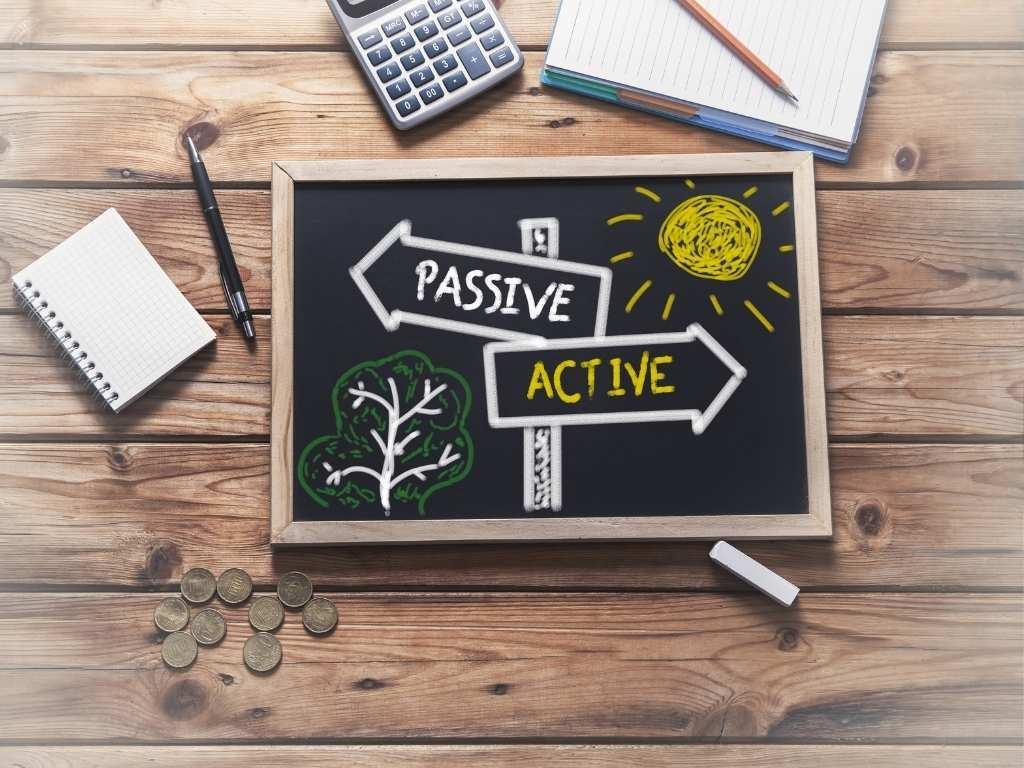
Simplify or Expand Ideas
Now, let’s have some fun with simplifying and expanding ideas! This is where you get to decide if you want to make things super easy to digest, or if you want to go full-on detail mode.
- Simplifying: This is a “quick and snappy” mode. If the original sentence is like a complicated math problem, you can simplify it to something that feels more like a walk in the park. You’re stripping away the heavy stuff and making it light, breezy, and easier to understand.
- Expanding: This is where you can get extra with your content! If the original text is short and to the point, expanding lets you add flavour. You can throw in a bit more context, sprinkle in examples, or explain things further to make the concept clearer.
Both options help you keep things fresh and unique. If you want to keep it simple, go ahead and give your content a makeover by making it clearer. If you want to dive deeper, expand and add those extra juicy details that make the idea pop. Either way, you’re moving away from the original text, and that’s what makes paraphrasing awesome for avoiding plagiarism!
Tools That Make Paraphrasing A Breeze
Sometimes, even the best of us hit a creative block and need a little assistance to keep things flowing. Fortunately, there are some awesome tools available that can help you with paraphrasing and give your writing the boost it needs. Here are some lifesavers that can help you paraphrase like a pro:
Arvin AI
Meet Arvin AI, the smart writing assistant who can help you with all things paraphrasing. Arvin is an AI-driven tool designed to make your writing and paraphrasing process quicker and more efficient. It uses advanced natural language processing (NLP) to understand the context of your text and suggest alternative phrasings that are contextually appropriate.
Arvin AI doesn’t just focus on rewording sentences; it also considers your tone, style, and even readability. It helps you rephrase sentences without losing the intended meaning, making it a fantastic option for both casual and academic writing. Plus, it allows you to fine-tune the level of creativity in your paraphrase, so you can keep it simple or go all out! (If not paraphrasing, you can also ask Arvin to give you tips for success as a UGC creator; you’re welcome!)
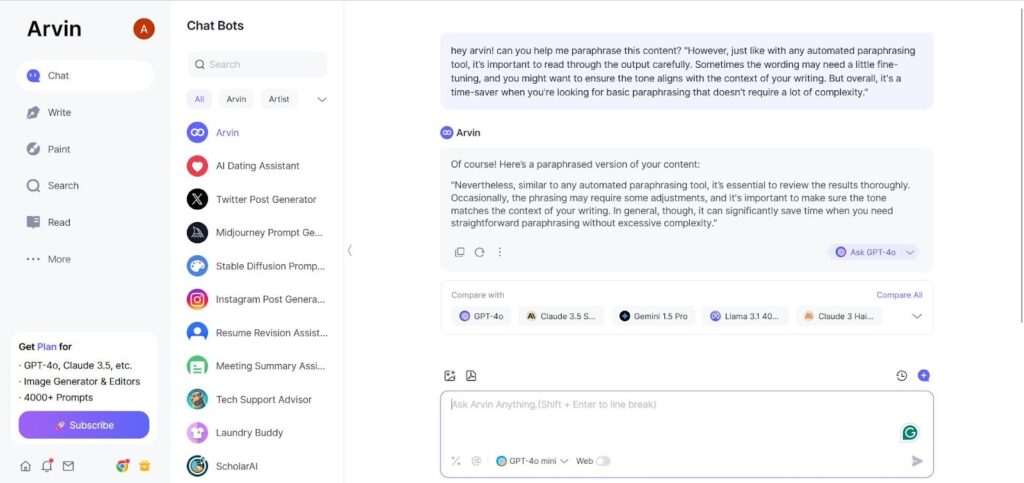
QuillBot
QuillBot is like having a smart assistant that knows exactly how to rephrase anything you throw at it. It’s perfect when you need some inspiration or help rewording a complex sentence. QuillBot works by taking your original text and suggesting alternative ways to express the same idea.
It even allows you to choose how much you want to alter the text, from light paraphrasing to a more thorough rewrite. The tool comes with a variety of modes to fit your needs:
- Standard Mode: Great for general paraphrasing
- Fluency Mode: Ensures that your paraphrase flows naturally
- Formal Mode: Useful when you need to rephrase in a more professional tone
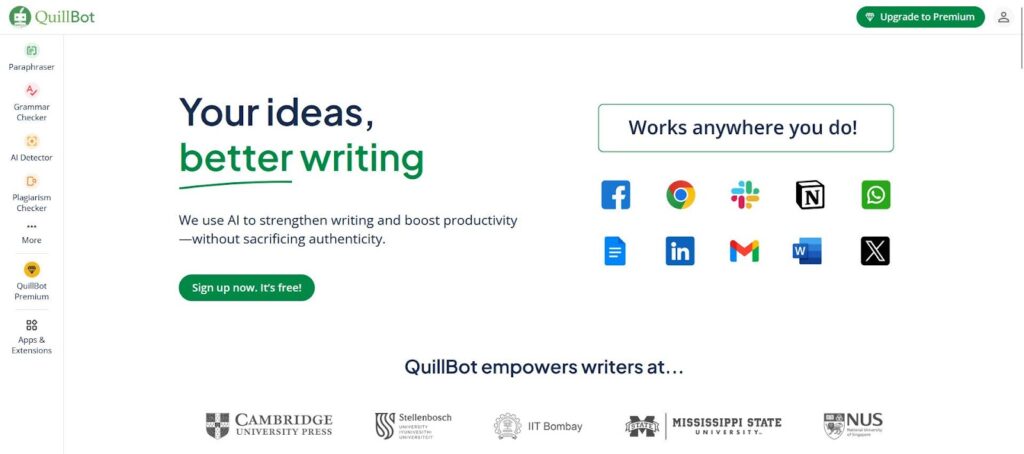
Grammarly
Once you’ve got your paraphrase down, Grammarly steps in to help you refine your writing. While it’s not a paraphrasing tool on its own, it’s incredibly valuable for polishing your rewritten content. Grammarly checks your work for grammar errors, sentence structure issues, and even clarity.
With Grammarly’s AI-driven writing assistant, you can ensure that your paraphrased content doesn’t just sound right but is also grammatically perfect and easy to read. You can also adjust your settings depending on whether you’re writing in a casual tone, a professional style, or something more academic.

A Thesaurus
Sometimes, all you need to do to switch up a sentence is to use a few new words. That’s where the trusty thesaurus comes in! Whether you’re using an online tool like Thesaurus.com or a physical thesaurus, this resource helps you find synonyms for specific words, giving you fresh alternatives to keep your writing from sounding repetitive.

Paraphrase Online
Paraphrase Online is a straightforward and easy-to-use tool that can help you reword your content quickly. It’s an online paraphrasing tool designed to take your original text and rephrase it in a new way while keeping the meaning intact. Whether you’re working on academic papers, or blog posts or just want to make sure your text is unique, Paraphrase Online can handle it.
One of the key features of Paraphrase Online is its simplicity. All you have to do is copy and paste the text you want to paraphrase. The tool will automatically generate a new version of the content with altered sentence structure and vocabulary. It doesn’t require you to sign up or create an account, making it incredibly convenient when you’re in a rush and need a quick paraphrase.
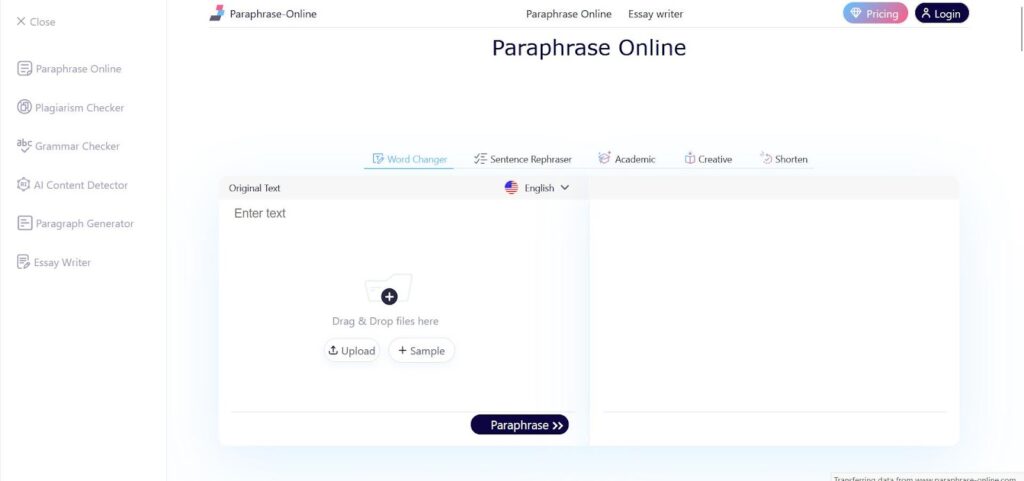
Practice How To Paraphrase
Paraphrasing is a skill that, just like any other, gets better with consistent practice. The more you practice, the more natural it will become to reword ideas while keeping the meaning intact. Here’s a detailed guide to help you practice how to paraphrase and improve your skills:
- The first step to practicing paraphrasing is selecting a passage to work with. This could be a sentence, a paragraph, or even a short section of a larger text.
- Once you’ve selected your passage, the next step is to rewrite it in your own words. The key here is to not look at the original text while you’re writing. You want to exercise your ability to retain the message and express it in a different way.
- After you’ve written your paraphrase, it’s time to compare it to the original text. This step ensures you’ve captured the right meaning and haven’t strayed too far from the original passage.
- The last step in improving your paraphrasing skills is to get feedback from others. Share your paraphrase with someone you trust. It could be a classmate, a colleague, or even a writing tutor. Ask them if the meaning is preserved and if the text sounds natural.
FAQS About How To Paraphrase
Here are a few of the most frequently asked questions about how to paraphrase:
What’s the difference between paraphrasing and quoting?
Paraphrasing and quoting are both methods for incorporating someone else’s ideas into your work, but they serve different purposes. Quoting involves using the exact words from a source, enclosed in quotation marks. Paraphrasing, on the other hand, is about rewording the original text in your own style.
Why is paraphrasing so important in academic writing?
In academic writing, paraphrasing is essential because it shows you understand the material you’re working with and can engage with it critically. Instead of simply quoting sources, paraphrasing allows you to incorporate ideas and research into your work while contributing your own voice.
How does paraphrasing help with SEO (Search Engine Optimization)?
Paraphrasing is a useful tool for SEO because it helps you create unique content that’s optimized for search engines. By paraphrasing existing content, you can naturally incorporate targeted keywords, avoid duplicate content issues, and improve readability. This boosts your chances of ranking higher in search engine results.
Is it necessary to cite the original source when paraphrasing?
Yes, it’s absolutely necessary to cite the original source, even when you’re paraphrasing. Paraphrasing involves rewording someone else’s ideas, and you need to give credit where it’s due. Failing to cite the source could result in unintentional plagiarism, even if the wording isn’t directly copied.
Take Home Message
And there you have it, folks! Paraphrasing doesn’t have to be a dreaded task; it’s actually a creative exercise that lets you make any piece of text your own! From understanding the original to playing around with sentence structure, changing voices, and even simplifying or expanding ideas, you’ve got all the tools you need to turn words into your personal masterpiece. But hey, why not take your paraphrasing game to the next level?
If you’re looking for an extra boost, using an AI writing tool like Arvin AI can make all the difference. This smart tool can help you rewrite sentences, suggest synonyms, and even give persuasive speech topics in just a few clicks! So, next time you’re tackling that tricky text, don’t be afraid to use the Arvin AI writing tool to speed up the process because Arvin knows how to paraphrase content that is on point.

